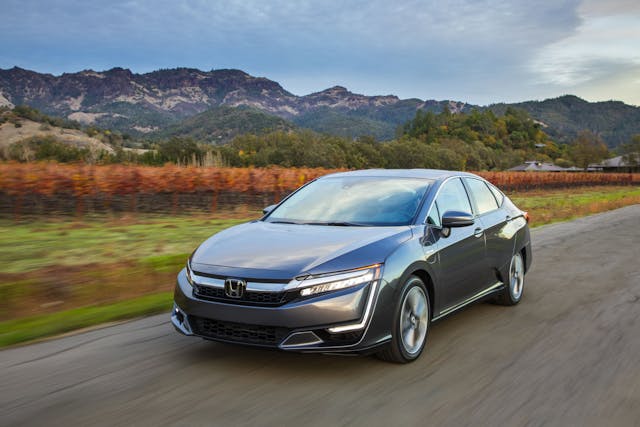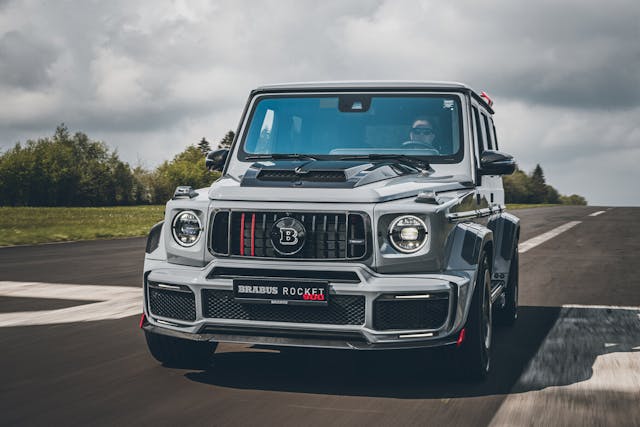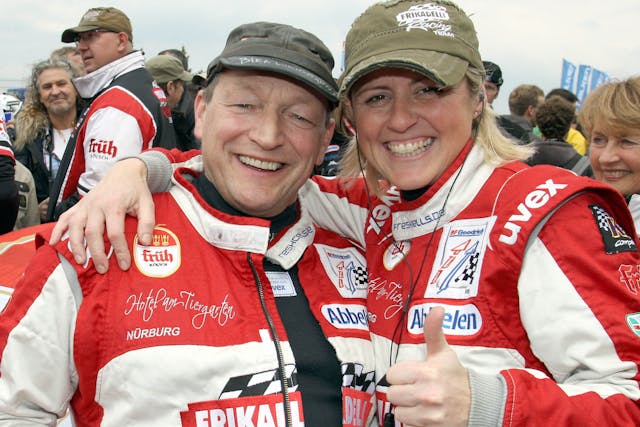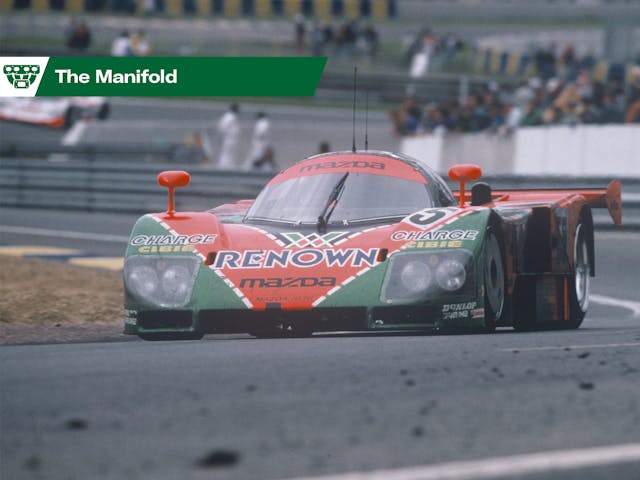Media | Articles
Mazda remembers ’91 Le Mans, Honda kills Clarity, Brabus plants a Rocket in the G-Wagen
30 years on, Mazda remembers its 1991 Le Mans victory
Intake: Mazda was hardly the favorite heading into the 59th running of the 24 Hours of Le Mans, but the exceptional reliability and efficiency of its four-rotor R26B engine helped it become the first Japanese manufacturer to win the fabled race. The winning 787B car above, #55, started 19th on the grid and fought its way past Jaguars and Porsches, which suffered from additional FISA weight penalties, to take over the infamous Team Sauber Mercedes. The trio of drivers taking turns at the helm of #55—which ran its first and only race that June—was exceptionally young: Johnny Herbert, Volker Weidler, and Bertrand Gachotr were each under 30 years old. Not until 2018, when Toyota’s TS050 Hybrid won at the Circuit de la Sarthe, would another Japanese manufacturer prove victorious at Le Mans.
Exhaust: Mazda remains the only manufacturer to win the race with a rotary powerplant—a non-reciprocating engine design that is now back on the table under the Le Mans Hypercar regulations that went into effect this season. We doubt anyone will run a rotary engine, however, a fact which makes Mazda’s ’91 victory all the more poignant. And no—the 787B wasn’t banned for being too fast; the same regulations that eliminated the rotary powerplant by mandating a 3.5-liter class to replace Group C, in which the 787B ran, predated Mazda’s ’91 victory.
Honda kills the Clarity

Intake: After 13 years and three different powertrains, the Clarity will succumb to its slumping sales numbers and slink into the automotive afterlife. This summer, Honda will discontinue both variants of Clarity currently on the market. While the pure-electric Clarity ended production in 2016, the plug-in version has been sold nationwide, and Californians have had access to hydrogen fuel-cell version on a lease-only basis. Farewell, Clarity.
Exhaust: Age isn’t the problem here. Toyota’s second-gen plug-in Prius model, the Prius Prime, is just as old as the current-gen Clarity and is approaching 100K units sold. Competition comes from within the Honda family, too: the Hybrid Insight starts at $26,205 and you don’t have to plug it in to get great fuel economy. Honda pure EVs are on the way, however, using GM’s electric platform and Ultium battery.
UPDATE: Don’t rule out more fuel-cell vehicles, either, says Lynn Seely, Honda PR rep. She also adds that Honda plans to make 100 percent of its vehicles battery-electric or fuel-cell-electric by 2040, indicating that, though the Clarity name may die, a bevy of similarly-motivated models will follow in its wake.
Marketplace
Buy and sell classics with confidence
The Brabus 900 Rocket Edition is a 174-mph sledgehammer

Intake: Aerodynamics be damned, Brabus has just forced the G-Wagen to go beyond 170 mph by installing its insane 900-hp Rocket motor into the boxy Benz. The 4.5-liter twin-turbo engine has previously been seen in the AMG GT 63S four-door and S-Class, and despite carrying obvious weight and aero penalties the 900 can, er, rocket to 62 mph from rest in just 3.7 seconds. The Brabus approach to styling is just about as subtle as the mechanical mayhem it creates: The 900 Rocket’s body is a wild ride of air intakes and vents, carbon-fiber fender flares, skirts and spoilers. The huge, 24-inch wheels have aero discs fitted, because that was clearly the most pressing wind-resistance issue, right? Inside, there’s radical red glaze on some 216 cockpit elements, plus lashings of carbon, leather, and Alcantara. The company says it will make just 25 of these G-Wagen goliaths priced at around $572,000 apiece.
Exhaust: The question of taste aside, the way that Brabus uses brute strength to overcome the forces of nature is worthy of some engineering admiration. That said, it’ll still be easily passed on the autobahn by a Bentley Bentayga Speed or a Lamborghini Urus.
’Ring names first turn after Sabine Schmitz

Intake: Sabine Schmitz, the “Queen of the Nürburgring,” has received a posthumous tribute fitting of motorsports royalty: The famous track has named its first corner in her honor. Schmitz, who died on March 16 after a four-year battle with cancer, grew up in Nürburg and, in 1996, became the first and only woman to win the Nürburgring 24 Hours. She later added a second victory there. Two years later, Schmitz also became the first woman to win the VLN Endurance Championship title. She won nearly 50 career races on the famous German circuit. She also drove a BMW M5 “Ring Taxi” for many years, taking fans for white-knuckle rides on the famous track.
“Sabine Schmitz was the ambassador of the Nürburgring,” says the ’Ring’s managing director, Mirco Markfort. “Her name was mentioned around the globe in the same breath as our racetrack. It still stands for what defines the Nürburgring: the close connection to the region, the close proximity to the fans and the passionate commitment.” The official inauguration of the Sabine Schmitz Kurve will take place September 11 as part of the six-hour ADAC Ruhr-Pokal-Rennen.
Exhaust: For many drivers and motorsports enthusiasts, Sabine Schmitz was the face Nürburgring. It is only fitting that the first corner of the ’Ring—her hometown track—bear her name.





